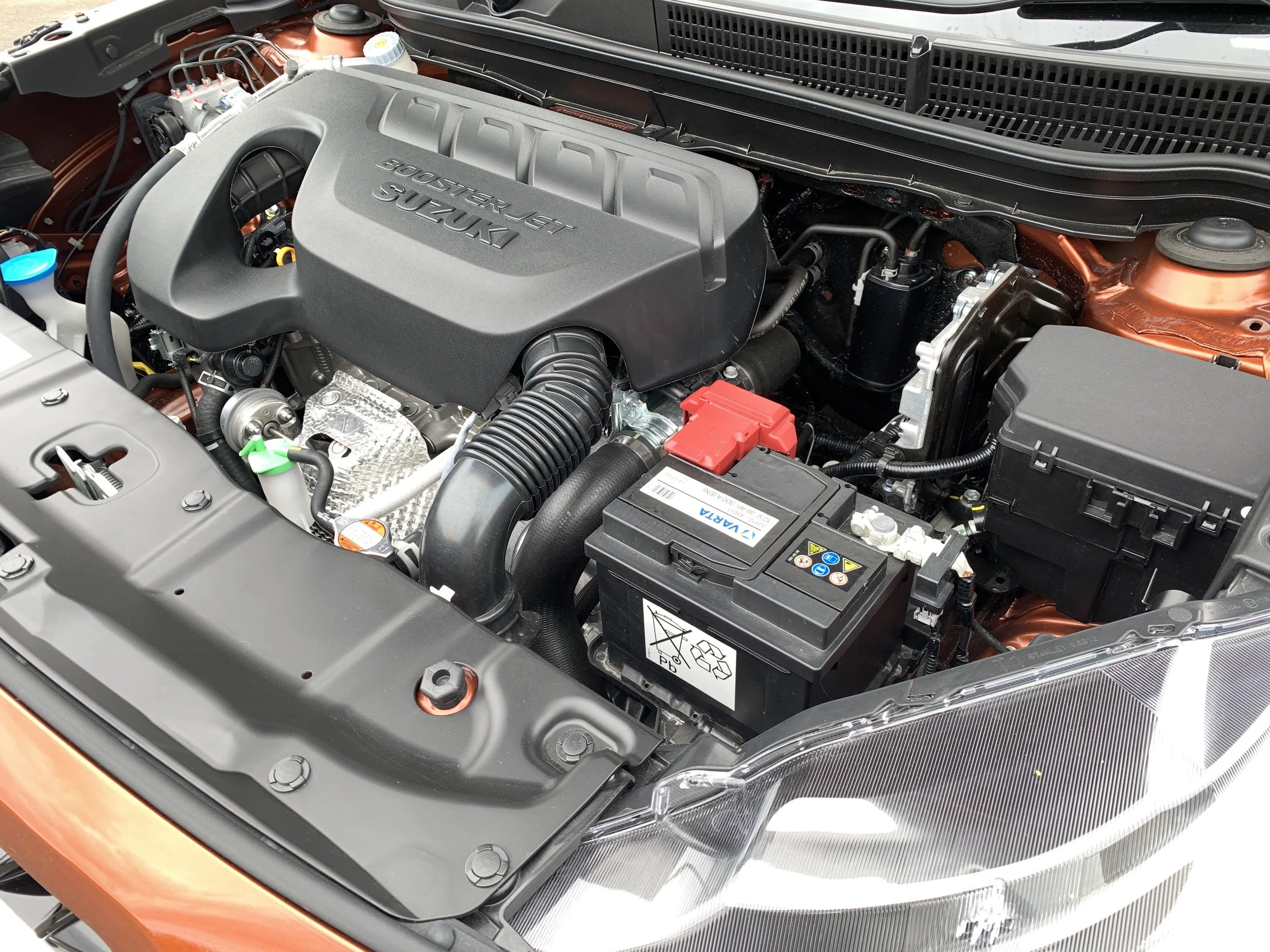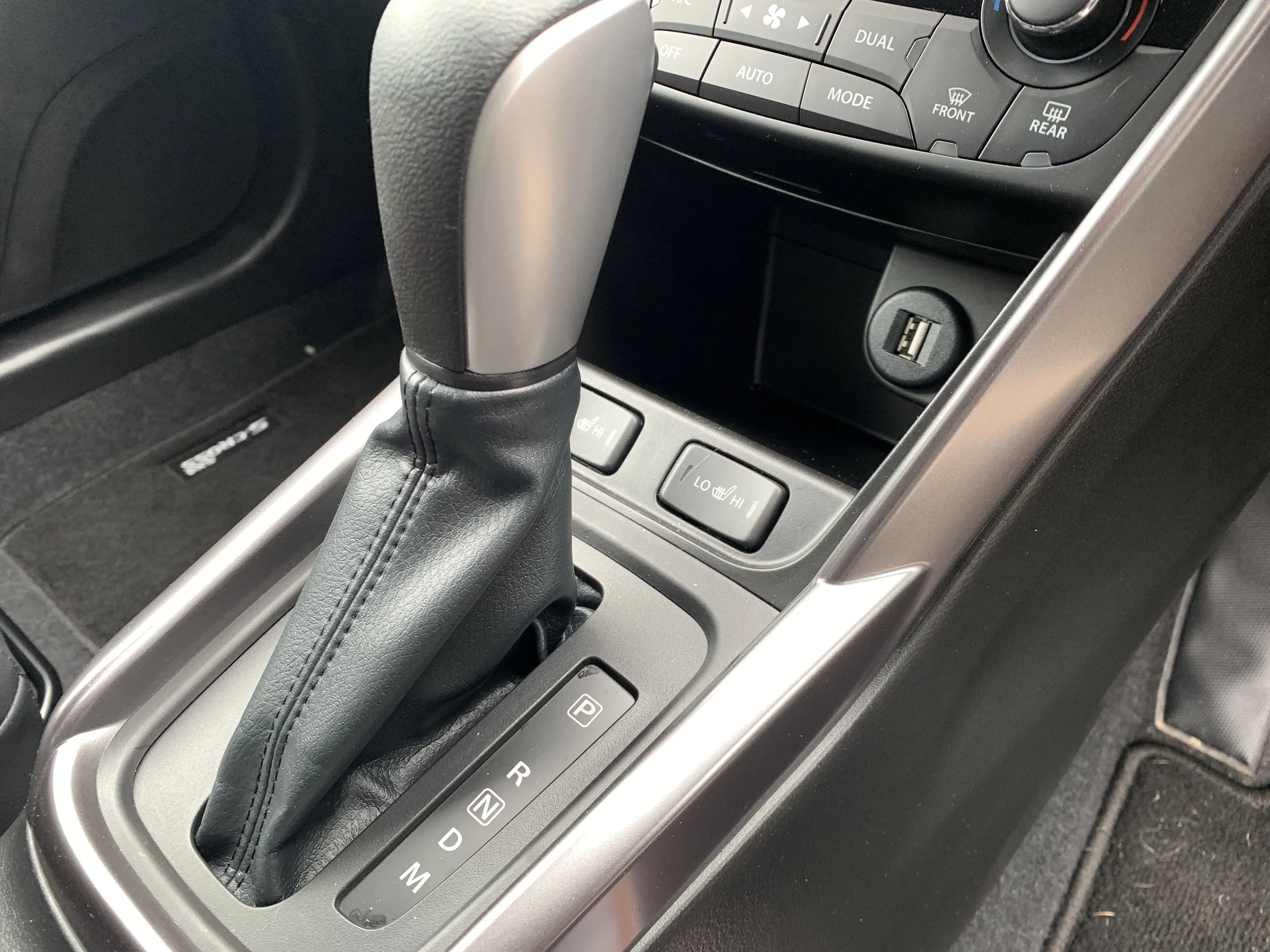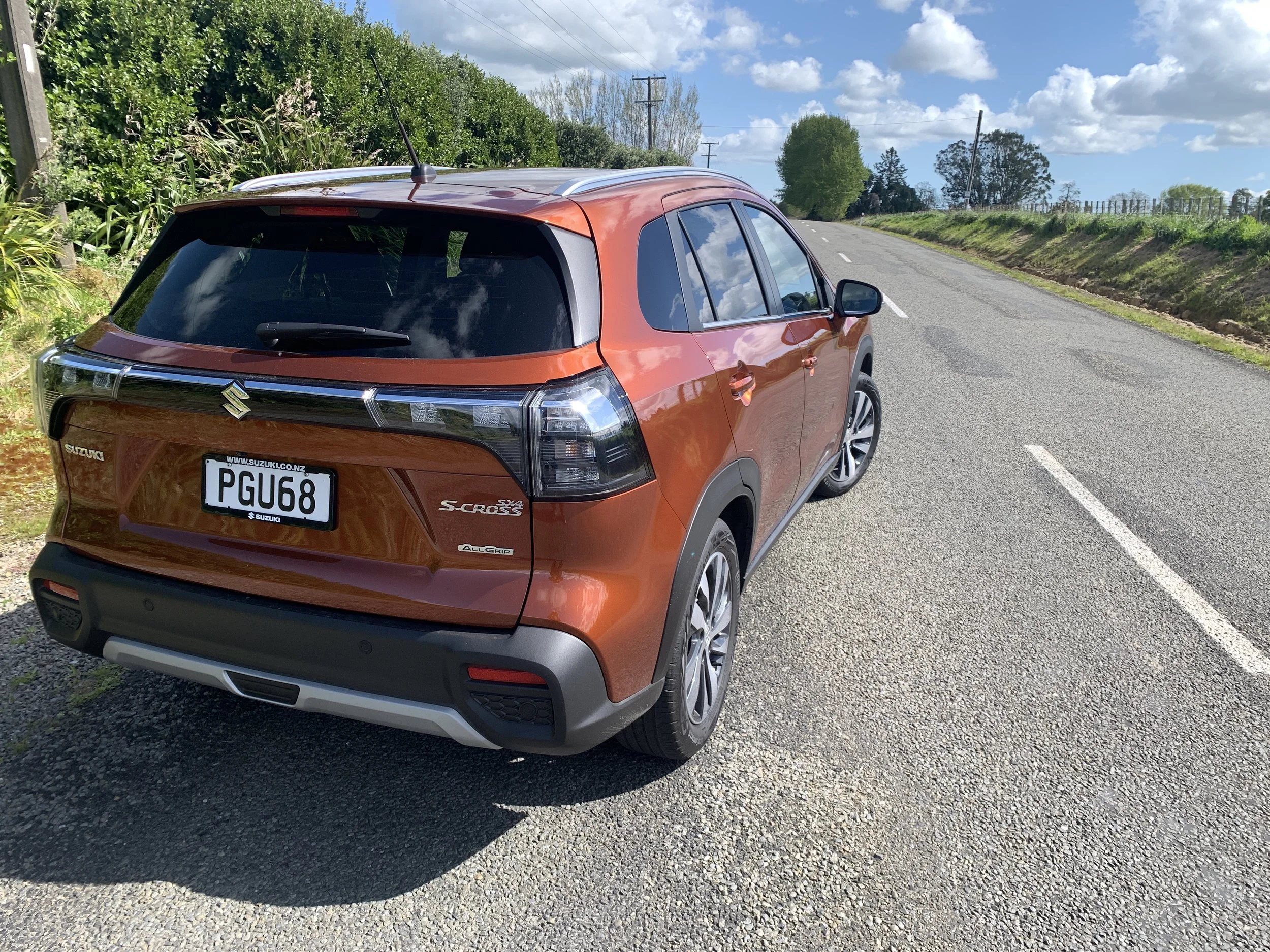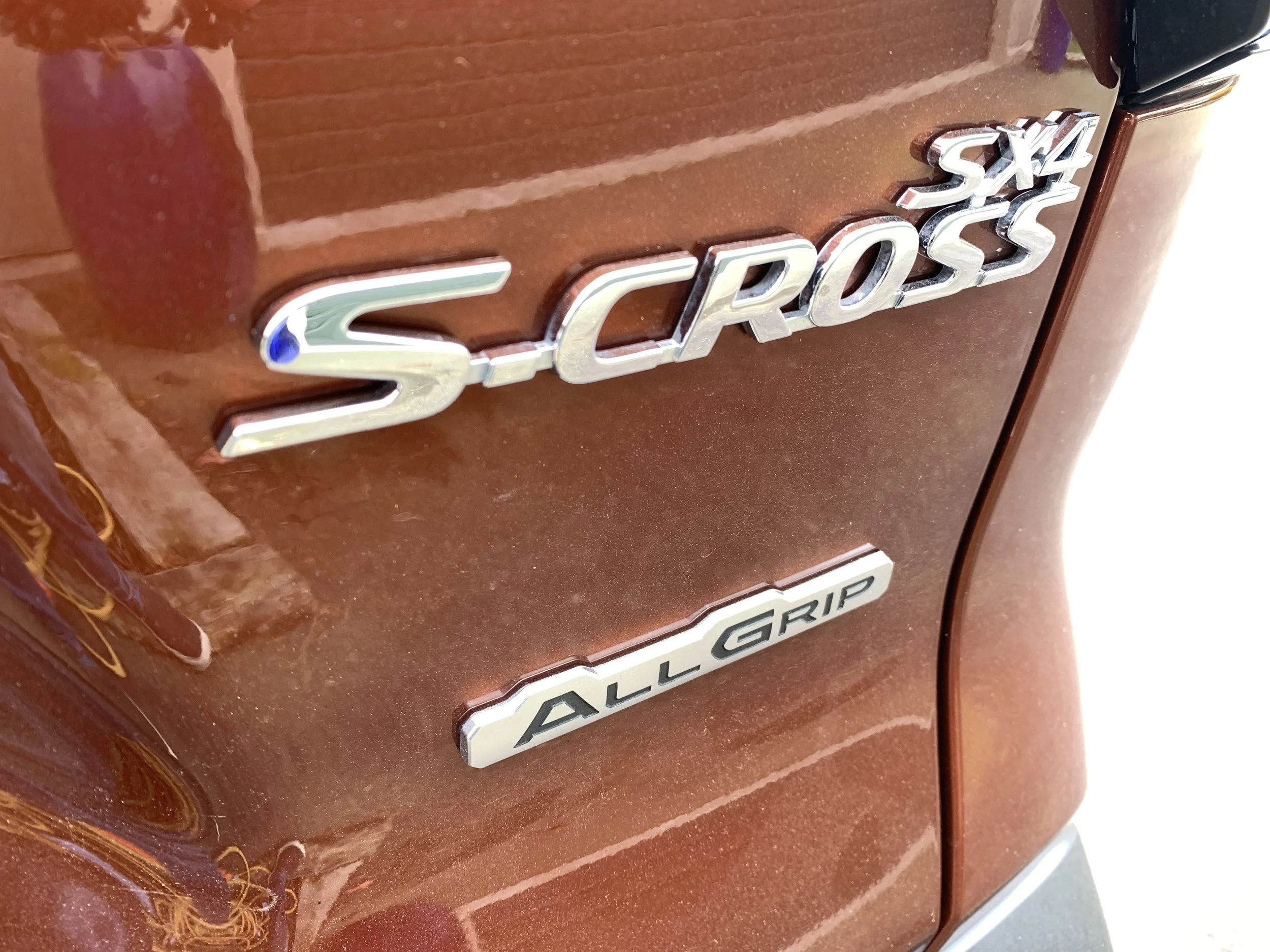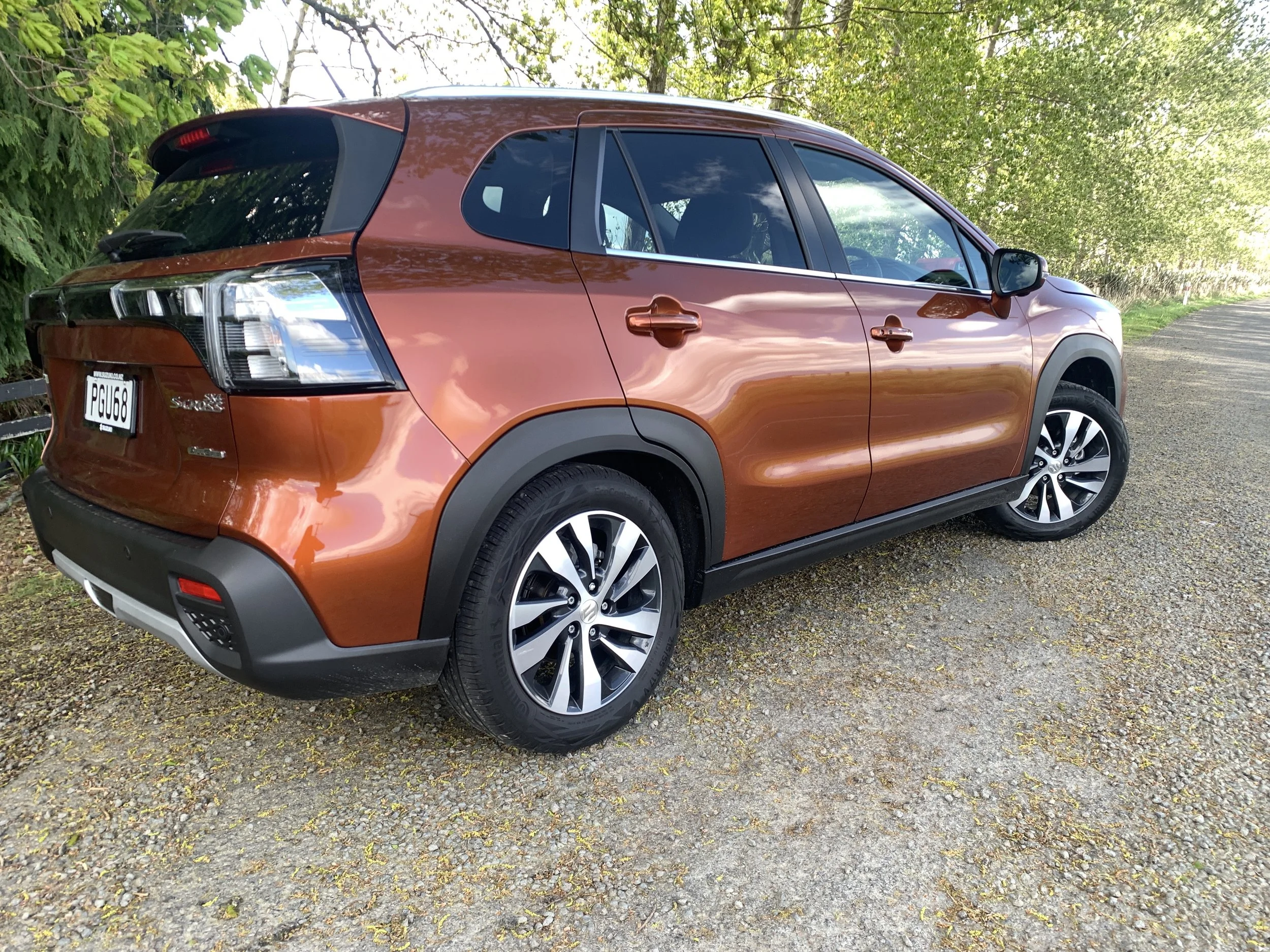Roadtest review Suzuki S-Cross: Still in its comfort zone?
/A freshen-up for this long-lived small battler is good. The price increase less welcome.
Price: $40,990
Powertrain: 1.4-litre turbocharged petrol 103kW/220Nm, six-speed automatic, AWD, combined optimal economy 6.9 litres per 100km, 142g/km CO2.
Vital statistics: 4300mm long, 1785mm wide, 1585mm high, 2600mm wheelbase.
We like: Zesty engine; improved roster of safety aids.
Not so much: Cabin’s scratchy, brittle-feeling materials; no longer a budget buy.
BATTERY-fed powertrains have yet to dominate, yet industry feedback suggests they’re increasingly in the minds of the car buyer.
Hybrid, plug-in hybrid, full electric … each has a growing fan club, there’s no argument, to point where market leader Toyota no longer thinks twice about offering the first in its mainstream passenger fare, and is looking to implement the others in more product.
Going battery isn’t as easy as the electric vehicle hardcore would have anyone believe; all the talk out of that quarter about makes being in the thrall of Big Oil and running to secret agendas is all so much tosh.
Reality is that adding this element brings cost and complexity - sometimes to point where it’s just not worth doing. Often too, with smaller brands, there’s just not the financial strength to effect a wholesale switch. Even those with deeper pockets are simply unable to give every market what it wants, when it wants it, also weighs in, to point where it simply has to prioritise some and ignore others.
So it seems to go with the S-Cross; the largest of the compactly-dimensioned passenger cars from Japan’s foremost expert in small, Suzuki.
Already one of the longer-lived cars in this make’s portfolio, the compact crossover has just undergone another refresh – the third since initial release by my reckoning – that brings plenty of change. Except where it might now matter most: Under the bonnet.
Still residing there is the smaller capacity yet also more powerful of two petrol engines it’s had for half a decade, a 1.4-litre turbocharged BoosterJet engine, mated to a six-stage automatic.
It’s a zesty, likeable and reasonably frugal powertrain, but is that enough? The price increases worn by the latest versions suggest it’s not cheap to incorporate and a taste for 95 octane or better means also reflects that, as much as it ekes a lot of out every litre, it’s still not cheap to feed.
Besides all that, with the car having been produced for six years now – a whole life cycle for many cars - you might wonder why it hasn’t either completely reprised or, at least, stepped up to something a little more, well, ‘ohmy’ and wired?
Actually, it has. Just not for New Zealand.
In Europe and the United Kingdom, this car has not only been running hybrid technology for several years but has just abetted the initial mild, 14.-litre set-up with a more fulsome electric assist version, in which a 1.5-litre petrol works with an electric motor-generator to point where it actually drives, if with distance and performance limitation, on pure electric.
Everything’s in pursuit of lower emissions and better economy; the drumbeat for those is loud in Europe.
Of course, you can hear it in increasing tempo here, as well. The whole point of the Clean Car legislation is to the steer us in this direction and an irony of the next stage of that regulation is that regardless that it is a specialist in small and frugal cars, Suzuki has to improve its range-wide CO2 average or suffer financial penalties.
At current juncture, it’s taking the latter course, with those extra costs set to be passed on to buyers, likely from January 1, when new rules for distributors come into play.
Brands that have electric-assisted fare have an easier time than those without. Suzuki, of course, has a hybrid Swift and, conceivably, the same kind of tech in S-Cross would effect difference, as it is more economical than the BoosterJet and emits less CO2, albeit not hugely because, according to reports, the full hybrid’s 25kW electric motor only rarely acts in isolation.
In any event, it’s entirely semantic, because they’re not part of the gameplan, due a blend of issues. NZ hasn’t been a favoured market and, in any event, rather than having the fully automatic transmission Suzuki NZ says its customers want, the hybrids have automated manuals.
Another complexity that cannot be resolved, I’m told, is that the hybrids are set up to automatically call emergency services in event of a smash. NZ emergency services cannot handle this and, according to a dealer I spoke to, there’s no way to deactivate the car.
Whether the S-Cross would be a better car with a degree of electric assistance is an open-ended question. Obviously the market is receptive to that tech, now, so on that strength … yeah, potentially, it would be a useful addition.
At same token, though, it’s hard to see even that alleviating the other challenges this car faces. If anything, an electric enhancement might further aggravate an already troublesome factor: The price.
Before this latest facelift, the S-Cross was an inoffensive but also reasonably-priced car. It’s still the first, but rather less so the second. In spanning JX and JLX levels of specification, in front-drive at $35,990 and $38,990 and with AllGrip all-wheel-drive, as tested, at $40,990; everything is $6000-$8000 more expensive than as it previously presented.
The extra spend can be seen in a fresh look. It’s been rather comprehensively restyled, to point where the entire frontal look has changed to make it appear a much younger car. The interior also gains a whole new dashboard, dominated by a big central touchscreen with latest phone integration. The JLX tested ticks off a nine inch Pioneer system with seven speakers, a 360-degree camera and satellite navigation.
The latest model also has a stronger safety specification. A forward detection system using cameras, sensors and radar provides lane departure warning, weaving alert, rear cross-traffic alert, blind spot monitoring, autonomous emergency braking and adaptive cruise control, with a stop/go function that’ll hold it at a stop in traffic, though relies on the vehicle ahead moving again within two seconds, else it’ll disengage.
Both the restyle and the safety and assist functionality upgrade were well overdue. The latter stands the car in much better stead when compared to others in the category. But let’s be frank. First, it’s Suzuki playing catch-up; it needed to act and finally has. Second, when the very same implementations have occurred with other rival cars, there haven’t been such big increases tied in. Some barely changed price.
So, is there enough going on here to warrant the increased spend? I’d say no, not really. Sure, the different grille and aggressive headlights are a big improvement over the original design and fit neatly into the carryover metalwork, but it’s not enough to alter the overall aesthetic, which isn’t shouty. Meantime, the cabin’s refit really is just all about the new touchscreen and little else.
The result is that it has become an almost jarringly modern ingredient in an environment in which most other elements – notable the switchgear - are not only unaltered, but are also more dated in appearance. On top of this, the major plastics are bordering on budget in look and feel.
Some may like the utilitarian approach; I agree there's an overwhelming sense of durability. It’s built to withstand punishment; and built well, too: quality of the assembly and paint is very good. But the trim materials are nonetheless more budget than can be found in more modern rivals.
Big cars aren’t Suzuki’s forte; the largest it tried was the Kizashi; a medium-sized sedan that burned the brand.
Even though S-Cross’s space utilisation is clever and the new look lends impression of it having grown, what you see now is exactly the same size as the original version of the car.
Buyers will appreciate the manageable exterior dimensions when they’re taking into urban tight spots, but there’s no getting around that with four adults aboard, it’s cosy and find room for all demands compromise. Boot space is fair.
Suzuki’s new infotainment interface is much nicer to look at than the previous type. It’s fairly simple to navigate, with a main menu that makes accessing basic functions rather simple. But on the test car it seemed a touch buggy. I use Apple CarPlay and it just wouldn't start on occasion. Maybe I need a new phone. Anyway, perseverance paid off. Maybe there’s a bias for Apple here, but I found the phone-run apps for nav and making calls to be sharper-witted than the native systems. To be fair, that’s often the case.
It’s been a few years since I last drove an S-Cross, but the driving side was instantly familiar.
The engine is a proven unit, making decent but not headline-grabbing outputs that are sent to an on-demand all-wheel-drive system with switchable modes through a six-speed torque converter automatic.
Acceleration off the line is quite enthusiastic – it’s step-off is doubtless helped by the Suzuki not weighing a lot – and it’s zippy around town. There’s also willingness to keep up with the bigger fare in the open road condition, though in country conditions it can also get a little noisy. Button off and let it cruise and it’s quite refined for its capacity.
The powertrain’s transmission marriage is solid, though it’s best driven in Sport mode, because that speeds up the responses from the accelerator while still shifting intuitively and smoothly. Saying that, as is often the case with small engined-cars you just need be aware that giving the throttle an extra-big prod to get up a hill will spin the rev counter beyond 4000rpm, with all the usual aural excitability coming into play.
Refinement is challenged. Though wind noise is well contained in the main, it suffers as many light cars do on our coarse chip, with perceived tyre roar fairly noticeable.
Handling-wise, it’s as before. Solid but no threat to the Swift. The light weight and direct steering speak to keen-ness, the body roll to a different reality.
Though it has four modes, realistically the AEWD will be operated mainly in auto, which switches to AWD only when slippage is detected, with occasional dalliance with Sport, which allocates extra torque to the rear wheels and improves engine response. S-Cross likely has enough off-road capability to conquer more demanding conditions than most customers will ever show it, though when heading into rough stuff it’s best to remain aware that ground clearance is modest.
I can see Snow, which enhances stability and traction, and Lock, which delivers maximum torque to the rear in sticky situations, are for occasions, gathering dust. On loose surfaces in auto, it demonstrates plenty of grip and great traction and stability; restricted to firm seal, it is confident as well, but the AWD doesn’t make it any more fun to drive, so don’t expect it to come across as a Quattro junior.
Ride is a bit on the firm side and you’ll learn to read surface conditions to keep clear of bigger bumps, but it never feels too stiff and body lean is controlled.
While the steering is light, that makes it easy to use in town where the turning circle is small enough to make manoeuvring relatively simple.
In respect to fuel consumption, I saw an indicated 7.5L/100km over 350km of mixed driving. Officially, Suzuki claims 6.9L/100km on the combined cycle, so though there was room for improvement on test, it’s negligible. Still, even with my approach, the car had a theoretical range of over 550km per fill of its 47 litre tank. The bigger challenge is that this engine demands 95 octane or better; a top shelf preference that might not gell well with budget-minded buyers.
I note, too, that the hybrid is cited to deliver an optimal 5.9L/100km. Is that such an improvement to warrant inclusion? Suzuki claims the AWD creates 145 grams per kilometre CO2, which pins it into the neutral sector of the Clean Car programme.
Overall S-Cross remains as it has been all the years it has been around. It’s an easy vehicle to drive but unremarkable, another now long-in-the-tooth product that’s being used to hold the line while Suzuki sorts itself for an electric-involved future. S-Cross stands as a robust and trustworthy product, but it looked better settled in its much lower-priced pre-update format. The extra dollars buy more, but it means the car now has to compete directly with more polished rivals.


